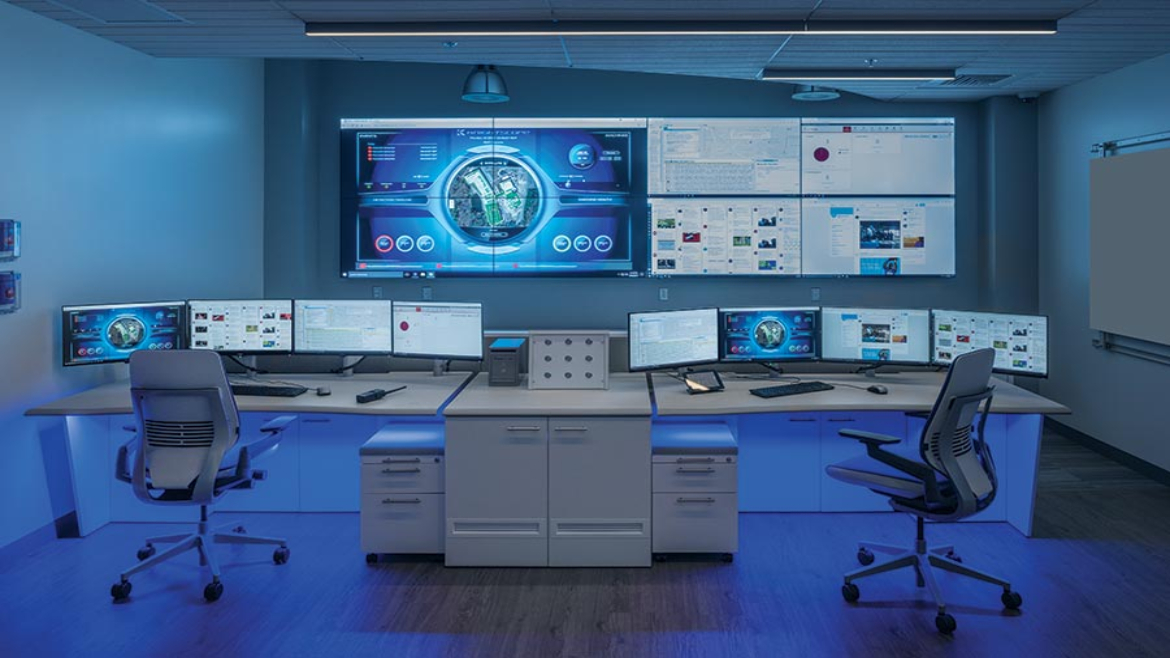Four abilities of next-generation PSIM platforms

The first physical security information management (PSIM) platforms, introduced 15 years ago, started the concept of capturing information from multiple “islands” of security technology to gain better overall site activity awareness.
These early PSIMs also began controlling previously siloed systems through a single security operations center (SOC) display. The “noise” from multiple systems was reduced, making the creation and implementation of a clear and cohesive security strategy easier.
It was a good start. Taking a holistic view of this security data led to better protection of an organization’s people and physical assets. However, the first-gen PSIM platforms were typically customized to address specific security problems of large single-use locations, such as an airport or stadium. The platforms weren’t designed to adapt quickly as organizations grew across multiple sites and regions — supporting a wide variety of different systems and use cases.
As PSIM enabled the integration of more systems, the interfaces became cluttered and overwhelmed operators with data. And now, as security technology continually advances, the PSIMs are showing their age. Today’s next-generation PSIMs use cloud computing, artificial intelligence, mobile and other technologies to offer more agile, resistant and feature-rich platforms to keep pace with the ever-changing needs of their organizations.
Here are four things to expect from a next-generation PSIM system.
1. Agility
As security mandates expand, many organizations require a more flexible platform. For example, security team members may need to quickly add an action to an evolving event or update a call list with a new user. As some activities are time sensitive, the system must help operators follow processes to make updates easy.
Today’s next-generation PSIM platforms use a cloud-based Software as a Service (SaaS) model that makes system changes simple. Setup is quick and organizations begin service virtually immediately without IT staff involvement. And the platform is scalable as an organization grows and its needs change.
2. Mapping
Most security software, including every PSIM, includes maps showing device locations. Often, these maps are displayed on large SOC monitors providing staff with the big picture of a site’s security system. However, maps don’t always offer the needed operational benefits to manage threats and events.
Rather than overload operators with information, maps on today’s leading next-gen PSIM platforms display only cameras, doors and assets located near an event. Providing operators with precise information gives them the situational awareness they need to resolve a situation.
Mapping also extends crucial data to field staff, providing team members with precise directions to a problem area and enabling them to assess potential threats better and locate nearby assets and resources.
3. Mobility
A physical security team consists of supervisors, managers, operators, guards, lobby attendants and more. Many team members spend their days in the SOC, while others may be virtually anywhere on site. PSIM platforms connect them with updates and operational support via mobile technology.
Communication between SOC operators and field teams often determines response times to events. A mobile app, part of next-gen PSIM software, tracks teams and quickly identifies the members nearest to an event. The app also enables field staff to send and receive notifications of significant incidents and status changes while sharing videos, photos and notes back and forth with the SOC.
4. Leveraging artificial intelligence
Artificial intelligence (AI) brings new services to the next-gen PSIM platforms. Beyond event detection, AI’s machine learning subset helps security teams predict high-risk areas before threats become an event. AI can anticipate where an organization’s employees and customers may face impacts caused by natural disasters, workplace violence, travel delays and pandemics. Real-time surveillance camera video scanned by AI-based technology identifies loitering and crowd formation and eliminates up to 90% of false alarms caused by non-threatening events such as wind-blown foliage.
AI looks at data from all security inputs, creating insights security team members need to make data-driven decisions that enhance overall security responses. Look for the new breed of AI to further simplify security operations by eliminating more of the noise made by disparate systems.
Older PSIM systems were designed and built to support a project, not to match the speed of today’s technology development. The cost of keeping these first-gen platforms has reached the point that upgrading is the most practical option.
Before making the jump to a new system, test its interface through the eyes of new operators on their first day on the job. Can they find floorplans, cameras, guards and other assets near an event quickly and intuitively? If so, that’s a big plus in favor of the platform.
Look for an open, vendor-neutral system that integrates with other systems and devices, providing necessary adaptability for long-term use as the heart of a modern security system.
This article originally ran in Security, a twice-monthly security-focused eNewsletter for security end users, brought to you by Security magazine. Subscribe here.
Looking for a reprint of this article?
From high-res PDFs to custom plaques, order your copy today!





